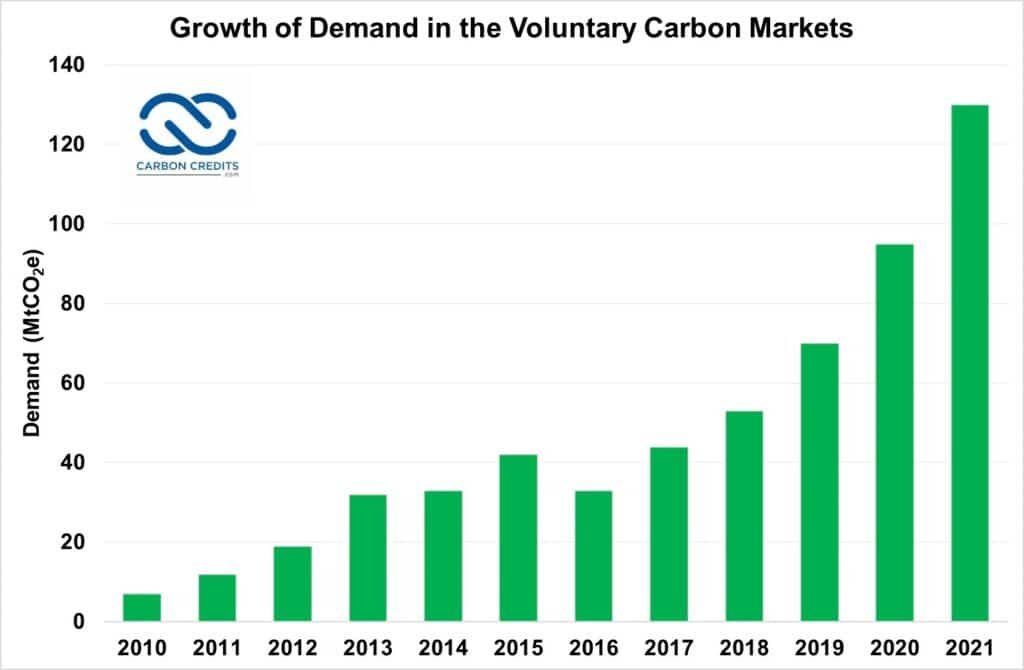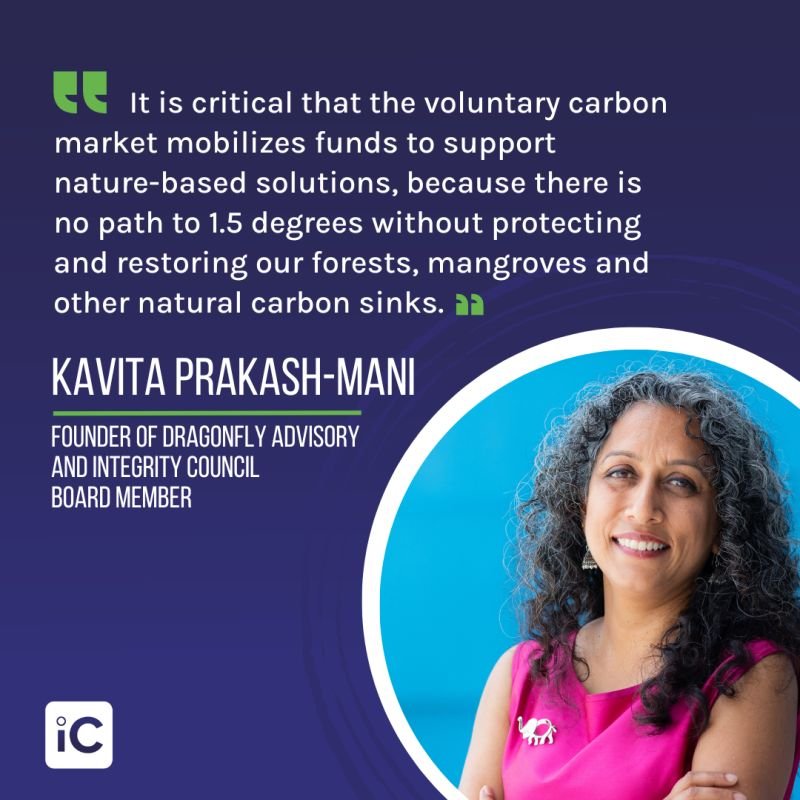While a few instances may have tarnished its reputation, dismissing all carbon offset projects as “greenwashing” because of a few probable bad actors is like throwing the baby out with the bathwater.
How Effective Are Carbon Offsets?
In the face of the escalating climate crisis, the urgency to achieve net zero emissions has never been more pronounced. The world is confronting a climate emergency, underscored by the unmistakable extreme weather patterns occurring across the globe. Given these circumstances, it is surprising that we even are having this debate.
Amid the discussion around a few possible cases of potential exaggeration, carbon offsets often come under fire for being viewed as a convenient “get-out-of-jail” card for emitters. Critics argue that these offsets allow companies to maintain their emissions without addressing the root causes.
However, this perspective fails to acknowledge that the process of transitioning towards a low-carbon economy is both intricate and gradual. The road to a net zero state demands attention not only on emission reduction but also on carbon sequestration.
The goal of net zero, simply put, involves balancing the amount of greenhouse gases emitted into the atmosphere with an equivalent amount removed. As we strive to find this balance, carbon offsets offer a pathway that harmonizes economic growth with ecological restoration.
The essence lies in enhancing natural systems like forests, wetlands, and farmlands absorbing more carbon dioxide than they release.
The IPPCC report earlier this year underscored the immediate and pressing necessity for more ambitious actions aimed at emission reduction.
In this perform-or-perish battle, it’s crucial to acknowledge that nature-based carbon offsets were never meant to be a standalone approach. Rather, they are just one piece in the broader strategy to reduce emissions. While there have been instances of problematic nature-based carbon offsets, there are also legitimate offsets that reduce and mitigate emissions.
Let’s look at some statistics.
According to the United Nations Framework Convention on Climate Change (UNFCCC), 13 out of the 60 developing countries which reported REDD+ activities to the UN Climate Change Secretariat, reported a reduction of almost 10 billion tons of carbon dioxide. That is almost twice the amount of greenhouse gas emissions from the United States in 2020, and taking 150 million cars off the road for a year.
REDD stands for ‘Reducing emissions from deforestation and forest degradation in developing countries. The ‘+’ stands for additional forest-related activities such as sustainable forest management and conservation, and enhancement of forest carbon stocks. Projects under REDD+ regulated by the United Nations can yield results-based payments for emission reductions when they reduce deforestation.
Undoubtedly, transforming REDD into a market-based mechanism holds great potential as a critical action to combat climate change. At the same time, it advances the SDGs agenda in the Global South.
Beyond natural ecosystems, agriculture plays a pivotal role in the carbon offset narrative. Sustainable farming practices, such as zero-till or reduced-till farming, agroforestry, cover cropping etc. bolster soil health while simultaneously capturing carbon.
Agroforestry, for instance, involves integrating trees into farmland, enhancing carbon sequestration and providing numerous benefits such as improved soil fertility, water conservation, and diversified income streams for farmers.
No-till farming involves growing crops without disturbing the soil, resulting in numerous benefits. These include reduced soil erosion, improved soil health and air quality, and increased water retention. It can also sequesters 0.3 tons of carbon/acre/year, noted by a Soil Society of America paper.
As has happened in the Canadian Prairies.
The Canadian Agri-Food Policy Institute notes that the adoption of “no-till methodology has had a dramatic impact on carbon losses in western Canada, moving the provinces from a net loss of carbon to a net gain position since 1981”.
In fact, carbon sequestration in Saskatchewan farmlands due to zero till farming is in the range of 0.3 to 0.65 tons per acre per year, according to another study conducted by GHG Registry, an organization founded by a group of academics focused on creating rigorous scientific standards for carbon sequestration projects, and the scientific team of CarbonTerra, a Saskatchewan-based company engaged in building a carbon-neutral agriculture ecosystem in the province.
Aside from providing farmers with an additional income stream, the process augments soil organic carbon content. For example, the Chicago Climate Exchange currently compensates land managers with approximately $2 to $3 per acre for adopting practices like conservation tillage to sequester CO2, the Soil Society of America paper notes.
This improvement in soil composition leads to heightened productivity, decreased soil erosion and nutrient runoff, and improved water quality. Soil carbon sequestration thus presents a mutually beneficial outcome for both the agricultural sector and the environment.
Further, such sustainable farming practices also lead to a decrease in the utilization of equipment and labor on agricultural land. Thus, cutting down fossil fuel emissions associated with these operations.
In fact, studies have estimated that adopting no-till practices can result in as much as a 71% reduction in the GHG impact compared to conventional tillage methods.
Carbon Offsets a Powerful Tool
Nature-based carbon forest offsets allow individuals, companies, or governments to offset their carbon footprint by investing in projects that remove or reduce carbon dioxide from the atmosphere. This helps neutralize emissions and combat climate change.
The industry has two segments: the compliance market, where entities are legally required to offset their emissions under regulations or agreements, and the voluntary carbon market, where entities choose to offset their emissions for ethical or reputational reasons. It is the voluntary market which has been under scrutiny in recent times.
In general, the offset industry is experiencing remarkable growth. The value of the global carbon credit market reached upwards of $850 billion in 2021, a 164% increase from 2020, according to Refinitiv.
Meanwhile, the voluntary carbon market alone grew at a record pace, reaching $2 billion—four times its value in 2020. And the pace of purchases is still accelerating in 2022, according to a report by BCG. By 2030, the market is expected to reach between $10 billion and $40 billion.


The nature-based carbon offset market was valued at $0.6 billion in 2020. This represents just 0.01% of the compliance credit market, as per a report from HSBC Centre of Sustainable Finance. However, according to BCG, nature-based solutions will be one of the most popular project types in the voluntary carbon market.
Need For Robust Regulations
As the regulatory frameworks struggle to keep pace with this rapidly evolving global market, as is with any new industry, the carbon offset sector is presently grappling with teething troubles.
Nonetheless, these obstacles didn’t deter the agri-foodtech investors from placing carbon-related startups at the forefront of their investment priorities for 2023, as noted by the AgFunder Global AgriFoodTech Investment Report 2023.
Establishing norms for strong governance, independent verification and standards of the market are crucial steps for reliable nature-based carbon offsetting. So are tackling issues such as additionality, leakage, and permanence.
The 2015 Paris Agreement had already established guidelines for proper accounting of offsets, laying the groundwork for their integration.
Last month, the Integrity Council for the Voluntary Carbon Market (ICVCM) published its full Core Carbon Principles (CCP) Assessment Framework. It sets high standards that aim to elevate the quality of the voluntary carbon market. ICVCM claims the CCP Framework will help restore confidence, deliver impact and attract increased investment for urgently needed climate solutions.
At the same time, ICVCM has also emphasized that there is no path to 1.5C without nature-based solutions.


Earlier, the new Claims Code of Practice released by the Voluntary Carbon Markets Integrity Initiative (VCMI) in June this year, provided guidance for private companies and other non-state actors on how to use carbon credits to achieve their short-term emissions reduction goals and long-term net-zero commitments. The VCMI recommends that companies “must purchase only high-quality carbon credits representing emissions reductions and/or removals from outside the value chain of the company”.
These are promising strides toward enhancing transparency and establishing standards within the carbon offset market. They replace the wide array of norms and a patchwork of regulatory systems across countries.
Let’s be honest, the recent critiques of nature-based carbon offsetting actually is a boon in disguise that is providing us with an opportunity to reflect on the state of the market and learn valuable lessons.
Already what is emerging as an encouraging trend is buyers showing a clear preference for a reputable monitoring, reporting, and verification (MRV) framework as a top criterion for purchasing credits. Over 90% of buyers rank MRV as a major factor in credit purchase decisions, noted the BCG report.
As the focus on carbon offsets intensifies, buyers are increasingly inclined to ensure that the credits they acquire are high-quality. Or what ICVCM calls them “high-integrity”, thereby safeguarding against accusations of greenwashing.
Despite the initial teething troubles, the carbon industry has great potential to really contribute to the fight against climate change. But for that, the industry must be open to criticism and willing to evolve.
By concentrating on proven approaches and achieving substantial net negative emissions on a large scale, we can cultivate public trust. Meanwhile, it is also imperative for all stakeholders including governments, regulators, and even investors, to demonstrate a responsible and ethical approach to carbon offsetting.
Contributed by: Anusuya Datta and Rachel Hor
Author Bios
Anusuya Datta: A writer/journalist with a special interest in earth observation and sustainability issues. Anusuya has written for several international platforms, including Geospatial World, Space News, and CBC among others.
Rachel Hor: Founder and COO, CarbonTerra. An experienced and proven global technology and business leader, Rachel is passionate about climate sciences while having vast experience in the financial services space globally and has led technology transformation. Her recent work is focused on sustainability in various verticals.
- SEO Powered Content & PR Distribution. Get Amplified Today.
- PlatoData.Network Vertical Generative Ai. Empower Yourself. Access Here.
- PlatoAiStream. Web3 Intelligence. Knowledge Amplified. Access Here.
- PlatoESG. Automotive / EVs, Carbon, CleanTech, Energy, Environment, Solar, Waste Management. Access Here.
- PlatoHealth. Biotech and Clinical Trials Intelligence. Access Here.
- ChartPrime. Elevate your Trading Game with ChartPrime. Access Here.
- BlockOffsets. Modernizing Environmental Offset Ownership. Access Here.
- Source: https://carboncredits.com/nature-based-carbon-offsets-crucial-in-the-road-to-net-zero/



